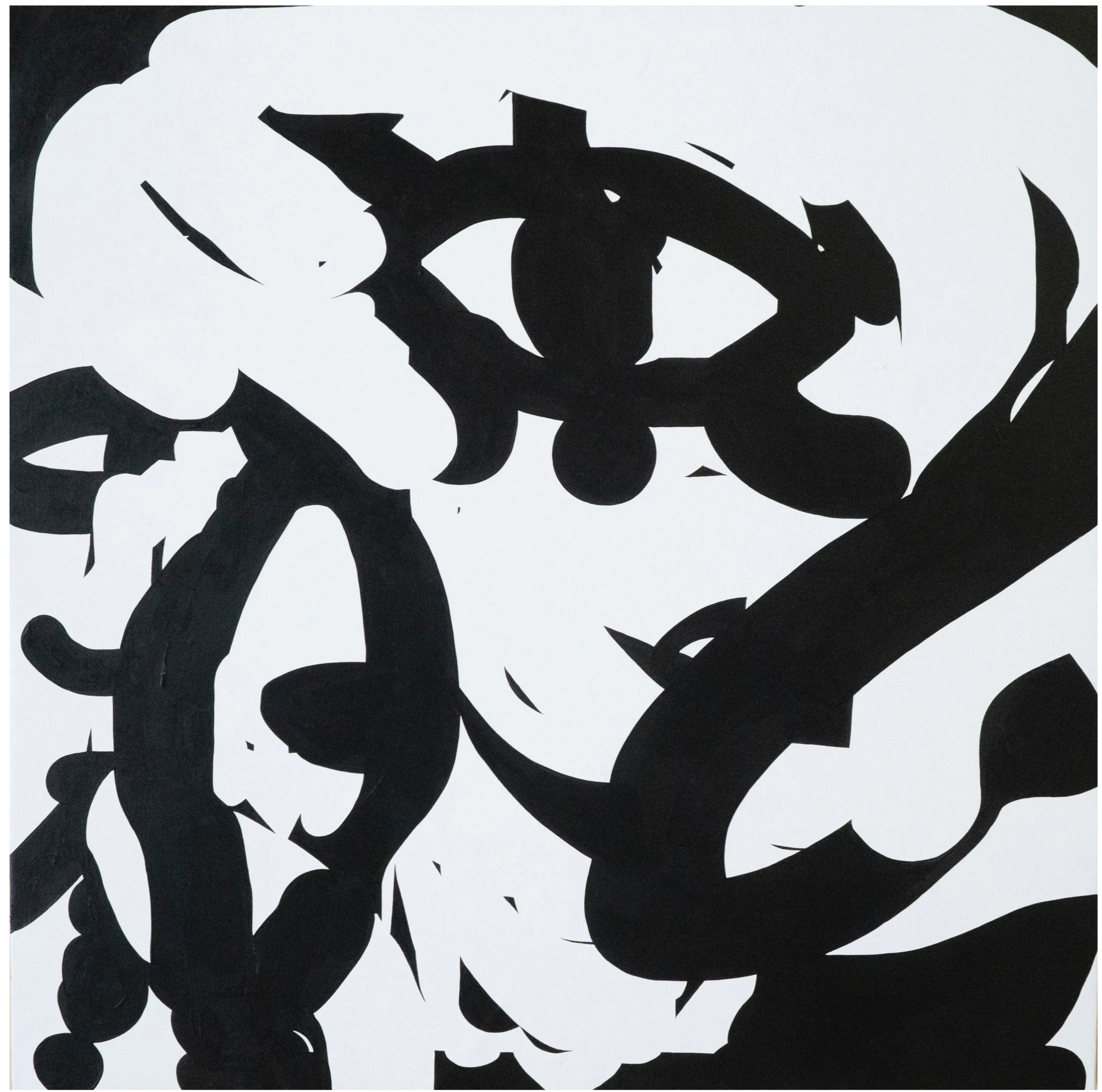Alisa Yoffe - Price £15,000 (+ any applicable taxes)

Fortuna, 2022
Alisa Yoffe (b.1987)
Fortuna, 2022
Signed and dated on the reverse
Acrylic on canvas
130 by 130cm
Provenance: The Collection of the Artist
Yoffe describes ‘Fortuna’ in the spirit of Dadaist art practice and the work is a reference to the French symbolist poet Stephane Mallame’s radical text, ‘A Throw of the Dice’. Like other paintings in her recent body of work, which are becoming more abstract, the process of making art has become an important preoccupation. Here it is helpful to read the final image as a serendipitous coming together of small creative decisions and incidents.
Much has been written elsewhere about Yoffe’s draughtsmanship, yet she says in essence she is more painter than draughtsman. It is perhaps in the little, fast physical movements, half daub, half swipe of her fingers on the screen of her I-phone that she consciously aligns herself to the traditional art of the painter.
The Mallarme ‘Dice’ series, which is on-going, includes three paintings, including ‘Fortuna’ and ‘A Throw of the Dice’, taking its name from the series, all painted in 2022. In these works, she adds and erases elements simultaneously, building the image through deliberation and trial and error, making the most of the specific characteristics of the digital medium. She has always preferred to create digital images, which she does as a constant practice using procreate on her I-phone in the spirit of a diary recording events, feelings, and thoughts. Only a small number of images from this extensive personal digital archive are then selected to be worked up into physical paintings.
‘Fortuna’ started out as just an eye and a mouth, a simple statement about being human as our eyes and mouth are fundamental to human existence: we need our mouth to eat and eyes to perceive or understand the world around us. Once she had created an initial image, she began to erase parts of the lines she had just made. As she did this on the screen of her I-phone, the eye and the mouth moved positions, initially rotating 90 degrees; as she continued adding and erasing, she noticed that the image was eventually moving in circles. She liked this motion, this circular movement, and carried on exploring it. During this transformation of the image, she took several screen shots, documenting how the image was changing throughout the process.
Process led creation in visual art finds its origins in the 1960s and 1970s which in turn had evolved from American Abstract Expressionism. Yet Yoffe´s inspiration lies further back in the Russian avant-garde rather than Abstract Expressionism showing something of her origins, having been born in Tashkent in the Soviet Union and educated in Moscow. During the process of making the image, while she erases the image she is has formed on the screen, the procreate app she uses accidentally leaves small black shards, still visible throughout the surface of the picture. The artist consciously draws parallels between these black shards, and similar shapes typical of early 20th century Russian suprematist paintings conceived to denote dynamic movement in wholly abstract, geometric compositions. Movement and dynamism interest Yoffe. She also references the work of the 20th century Russian cubo-futurist painters, such as Alexandra Exter and Liubov Popova who like the Italian futurists looked at ways of representing the pace of modern life in their canvasses.
If the industrial revolution and its aftermath sped up the pace of life with trains and electricity, Yoffe sees yet further acceleration in the wake of the digital revolution. She talks much of the rhythm and tempo of contemporary life, of how information spreads around the world at unprecedented speeds, and its effects on us. It informs her choice of black and white, which she says is a way of capturing something of the uncompromising speed of contemporary life. The role of accident and chance in the making of the image of Fortuna as a reflection of an art process or a symbol of the act of making art itself is a good starting point understand the painting. The reference to Mallarme acts as a mirror. Best known for his radical poem ‘A Throw of the Dice Will Never Abolish Chance’ a text with a pictorial, typographic layout which anticipated concrete poetry; the graphic characteristics of Yoffe’s paintings, which she explains have no depth or perspective, in a kind of reverse act bring with them suggested narratives, and the comparison lends her work a poetic dimension. She has described the act of creating the work itself as like a spinning wheel – an allusion to the figure of Fortuna who is often holds a wheel, but also is the action of a dice when it is thrown. Mallarme’s radical poem has continued to inspire artists since it was first written in 1897, most notably the Belgian contemporary artist Marcel Broodthaers who replaced the words with black strips on white paper.
About Alisa Yoffe
In 2022 Alisa Yoffe (born in Tashkent in 1987) is represented at the Eye of the Collector Art Fair in London. In 2020 she was named by the Art Newspaper Russia among a list of the top most promising 50 contemporary artists in Russia, where she took 4th place. Between 2017-2020 she collaborated with international fashion houses and luxury brands, such as Comme des Garcons, Cartier, Maison Margiela and Bonne Suits. She has also done work for the interior design company The Dot Home and the Richter Hotel in Moscow. She studied under Anatoly Osmolovsky, is a fellow of the Joseph Brodsky Fellowship Fund and was a resident of the American Academy in Rome from 2017-2018. When she was just 28 she was named by Forbes Magazine as one of the most promising young artists in Russia.
Contact Us About Alisa Yoffe
Vickery Art
Copyright © 2021 Vickery - All Rights Reserved.
